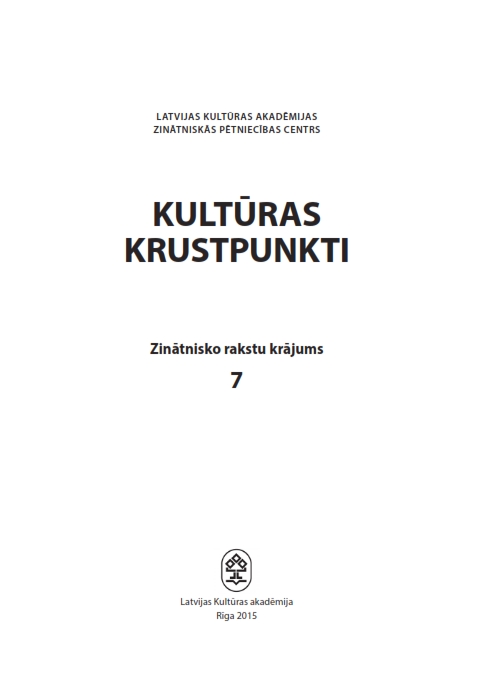Jura Karlsona dejas teātris. Balets “Karlsons lido...”
Juris Karlsons’s Dance Theatre: The Ballet “Karlsson Flies …”
Author(s): Andris VecumnieksSubject(s): Theatre, Dance, Performing Arts, Cultural history, Music, Latvian Literature, History of Art
Published by: Latvijas Kultūras akadēmija
Keywords: dance theatre; theatricality; choreography; national generalisation; individual autobiographical message; genre personification;
Summary/Abstract: Alongside with theatre, a bright feature of Karlsons’s music is choreography and the corresponding space of dance theatre because ballet is a dance theatre. Karlsons’s contribution to the genre of ballet is laconic in quantity while substantial in quality. All ballets have been composed at different stages of his creative life, and their themes differ in style, genre and imagery. Another title of the ballet “Into the Fire” (a play by the Latvian playwright Rūdolfs Blaumanis Ugunī) is “A Concerto for Orchestra in Five Movements after Reading Blaumanis”. The first artistic achievement of the genre lies both in the field of ballet and concert. It can be considered a substantial and qualitative impulse for his future creative work, as the symbolism of this ballet lays ground for the next ballet that was created as a result of studying the writings of the Latvian poetess Aspazija and her play “The Silver Veil” (Sidraba šķidrauts). This ballet is the quintessence of Karlsons’s symbols and signs. The composer’s success (and that of the whole creative team) lies in the fact that the national and creative ideas are not presented in a declarative and conspicuous manner; they are presented as a national generalisation in a subtle language of symbols and subtexts. “The Symphonic Pages of the Ballet “The Silver Veil””, which followed nine years later, can be viewed as the quintessence of the ballet “The Silver Veil”, and it can be compared to a film adaptation or staging production of a literary work. We can feel an individual autobiographical tone in the musical message of the ballet “Karlsson Flies …”. Karlsons lays special emphasis on the meaning of fairy tales in the life and consciousness of a human being, and he offers another conception of theatricality. We observe a synthesis of acts and a continuous development of musical dramaturgy. The principle of acts has allowed the composer to accomplish vivid scenes and effective fragments of music whereas the continuous dramatic development has filled the ballet numbers with leitmotifs since the composer has performed very thorough work in directing the musical material. A special type of theatre that the composer offers in the second act is a discovery. The fashion theatre is synthesised with the dance theatre. In the composer’s creative work, this ballet is truly crowned with success in children’s music, as the dance genre is an essential means of expressing genre personification.
Journal: Culture Crossroads
- Issue Year: 7/2015
- Issue No: 1
- Page Range: 160-172
- Page Count: 13
- Language: Latvian

